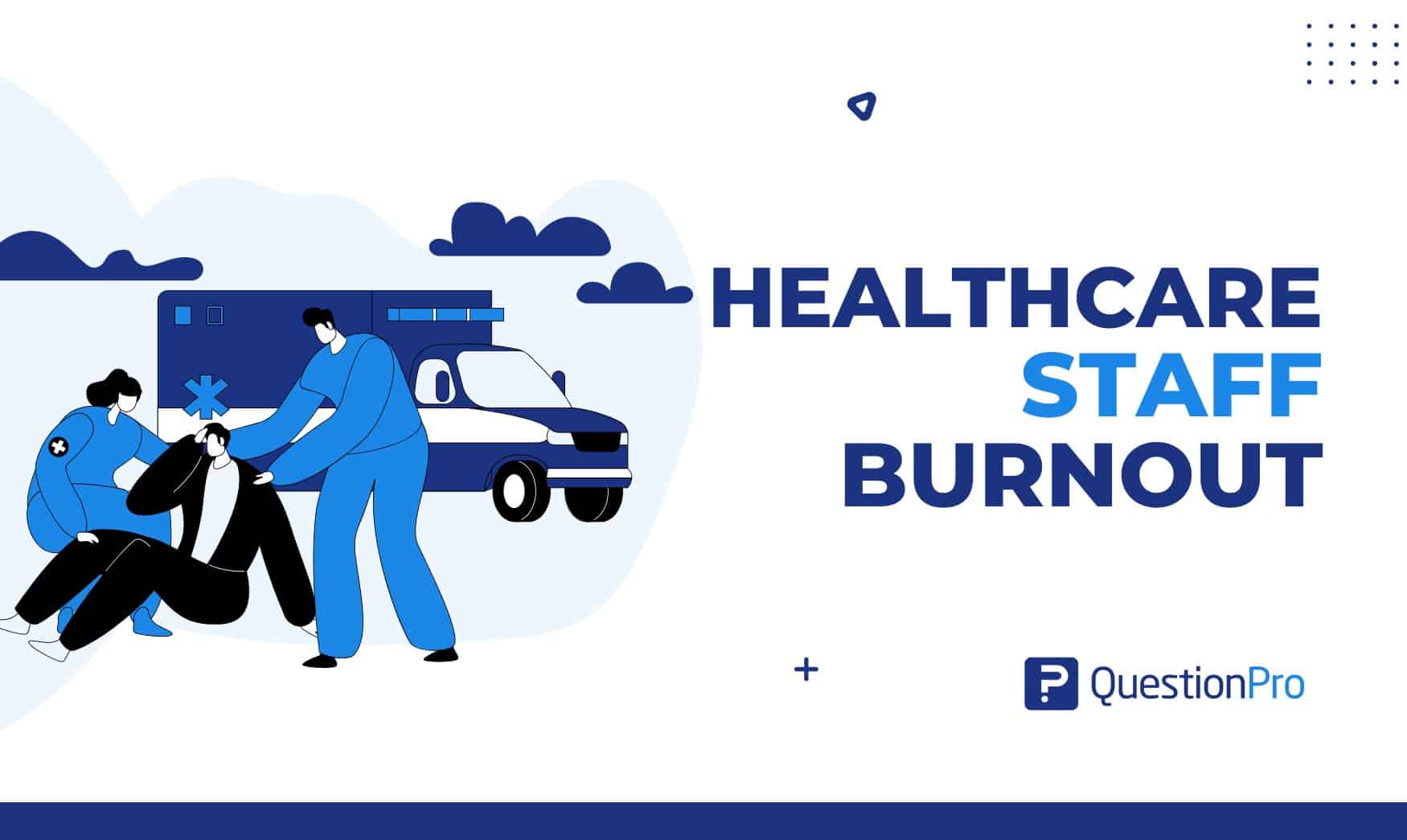
According to a study by the Mayo Clinic in 2021, 6 of every 10 physicians have reported at least one manifestation of burnout symptoms. This number is the highest reported in the last 10 years that the study has been conducted and reflects a healthcare system that needs big changes. This implies healthcare staff burnout has become the most important concern in healthcare institutions in the last few years.
With healthcare suffering from dramatic changes (AI disruption, policies and regulation, cybersecurity, and data protection), it was only a matter of time before the organizations that deliver care started suffering the impact of an overall compromised system.
Healthcare professionals experiencing burnout are caught in a dangerous cycle. Not only can their metal health state lead to an increase in medical errors, but such errors can further exacerbate their burnout, creating a vicious circle that endangers patient safety. Studies from the Agency for Healthcare Reasearch and Quality (AHRQ®) have highlighted the correlation between the burnout reported by clinicians and the subsequent self-reported medical errors.
How burnout looks like in healthcare staff
Burnout manifests through symptoms such as emotional exhaustion, depersonalization, and a profound sense of ineffectiveness. These symptoms can dramatically affect a healthcare provider’s capacity to deliver care, leading to a decrease in patient satisfaction and a compromised healthcare delivery system.
Excessive workload and insufficient support from healthcare organizations have been pinpointed as significant factors contributing to the heightened risk of errors, highlighting the systemic nature of the problem. The emotional toll on healthcare workers, characterized by feelings of detachment and cynicism towards patients, directly impacts the quality of care and undermines the effectiveness of the healthcare team.
Listen, Learn, Plan…Repeat
We live in an era where the well-being of healthcare staff is as critical as the care they provide. Proactive measures by hospitals and healthcare executives to collect and analyze staff feedback are key to developing a safety culture in the hospital. Initiating regular surveys and open forums allows for a direct line of communication between staff and management, ensuring that concerns related to workload, mental health, and workplace environment are not only heard but addressed promptly. This proactive stance demonstrates a commitment to cultivating a supportive and responsive work culture, positioning the organization to swiftly adapt to the evolving needs of its workforce.
Reflecting on the Vivian Report of 2022 reveals compelling insights into the state of mental health support and the value placed on staff input within healthcare settings. A troubling 31% of healthcare professionals reported feeling unsupported by their organizations regarding their mental health, in contrast to the 29% who felt supported. Their report also showed a significant gap in the valuation of staff input, with 43% feeling undervalued versus 26% who felt their contributions were appreciated.
With data collection in the form of insights, healthcare institutions must craft action plans that are both strategic and flexible, aiming to address the concerns highlighted by their workforce. The development of such plans should be followed by regular analysis of their impact, assessing improvements in staff well-being and job satisfaction. Subsequent surveys can then measure the effectiveness of implemented actions, allowing for continuous refinement. This iterative process ensures that healthcare organizations not only respond to current challenges but also prevent future issues, fostering an environment where staff feel valued and supported.
AI to Reduce Manual Work Burden
Navigating the complexities of modern healthcare, physicians often find themselves constrained by the clock, with patient consultations averaging between 10 to 13 minutes. This is far from the ideal 30 minutes that experts recommend for a thorough patient examination and consultation. The bulk of a doctor’s time is consumed by administrative tasks such as filling out admission forms, managing insurance documents, and writing prescriptions. This imbalance not only strains doctors but also compromises the quality of patient care, highlighting a pressing need for solutions to streamline administrative processes.
In te most recent study conducted by QuestionPro and developed by Day One Strategy, ClinicAI Companions Report, involving over 501 clinicians across the United States, the potential of generative artificial intelligence (Gen AI) to reshape healthcare practices was brought to light. A significant 57% of clinicians surveyed believe that AI could save them time, with half of the respondents asserting that it would enable them to deliver better patient care. While 51% have observed AI being utilized for patient documentation, whether in their own practices or elsewhere, and 47% have seen its application in the form of chatbots or virtual assistants.
Gen AI, with its ability to understand and produce human-like text, stands at the forefront of this technological revolution in healthcare. Over half of the clinicians (51%) are optimistic about AI’s potential to significantly improve the care they provide to patients. This enthusiasm is rooted in Gen AI capability to simplify complex administrative tasks, tailor treatment plans to individual patient needs, and improve health outcomes. However, the integration of AI into healthcare is in need of careful regulation by both hospital administrations and government agencies. Tailoring AI tools to meet the specific needs of each hospital while ensuring clinicians remain integral to their deployment and utilization is crucial for maximizing their effectiveness.
Patient Empathy Skills for Healthcare Staff
Empathy, the capacity to recognize and share another person’s feelings, is more than a mere interpersonal skill in clinical settings. Distinguishing itself from compassion, empathy focuses on understanding and relating to patients’ emotions and experiences, setting the stage for compassionate action.
The significance of empathy extends beyond building rapport; it directly influences patient satisfaction, adherence to treatment plans, and overall clinical outcomes. Patients who feel understood are more engaged in their care, leading to better health results and fewer instances of litigation, ultimately enhancing the healthcare experience for both patients and providers.
Despite its importance, many healthcare interactions still lack this essential element, underscoring the need for a systemic shift toward more empathetic healthcare delivery.
Cultivating a culture of empathy within healthcare organizations requires commitment from all levels, particularly from senior leadership. Helen Riess, MD, has demonstrated through her work and studies that empathy can indeed be taught and that its enhancement leads to better patient care.
In the study, over half of the physicians she observed reported a decline in their empathy levels over recent years. Yet, noticeable improvements were made following targeted empathy training programs, such as the Consultation and Relational Empathy (CARE).
While the changes were not statistically significant, there was a positive shift in the demonstration of empathy among trained clinicians compared to those in the control group. Empathy must be embedded into the fabric of healthcare, with leadership modeling empathetic behaviors, making empathy a criterion in hiring and onboarding processes, and ensuring it influences recognition and reward systems.
This top-down approach is pivotal in creating an environment where empathy is valued and practiced across all patient interactions.
Implementing a culture of empathy in healthcare settings does not have to be an overwhelming task. Simple, actionable steps can make a substantial difference in enhancing the patient experience. For instance, the inclusion of empathy-driven questions on patient intake forms, like asking how a patient prefers to be addressed or what their main concern is for the visit, can set a tone of respect and attentiveness right from the start.
Involving patients in care design and decision-making processes ensures that the healthcare system is responsive to their needs and experiences. By adopting measures such as these, healthcare executives and staff can shift towards a more empathetic, patient-centered approach to care, reinforcing the importance of understanding and addressing each patient’s individual needs.
Conclusion
Healthcare staff burnout has emerged as one of the biggest challenges within the US healthcare system, signaling a critical need for systemic change to safeguard the well-being of those at the forefront of patient care. To begin addressing this issue, healthcare organizations must prioritize listening to and acting on their workforce’s concerns, specifically regarding their emotional well-being and workload.
Recognizing the signs of burnout and implementing measures that alleviate stress and workload can significantly impact the overall health of the healthcare environment. Initiating regular feedback mechanisms, providing mental health support, and ensuring workloads are manageable are foundational steps towards fostering a more supportive and sustainable healthcare system.
Exploring innovative strategies such as the adoption of AI to reduce the administrative burden and developing empathy programs for healthcare providers can be the future for enhancing the quality of patient care. By leveraging AI, healthcare facilities can streamline tedious administrative tasks, freeing up healthcare professionals to focus more on patient interaction and care. Nurturing empathy within the healthcare workforce not only improves patient satisfaction but also enriches the job satisfaction of healthcare providers, creating a more compassionate and efficient healthcare delivery system.







